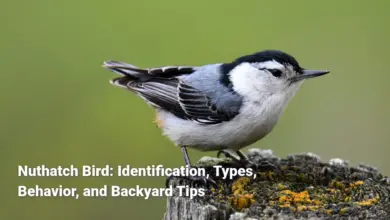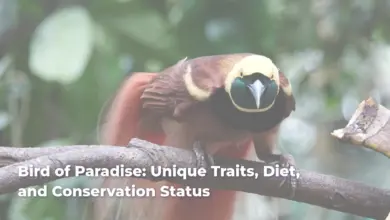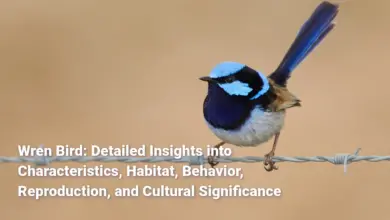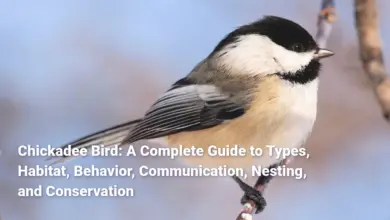Common Loon: Habitat, Physical Characteristics, Behavior, and Conservation
Common Loon: An In-Depth Look
The Common Loon, known scientifically as Gavia immer, is not just a bird; it is an iconic symbol of North America‘s pristine lakes and wild spaces. With its enchanting calls that echo across tranquil waters and its striking black-and-white plumage, the Common Loon captures the imagination of birdwatchers, nature lovers, and environmentalists alike. But there’s more to this remarkable creature than its captivating appearance. Understanding the Common Loon involves exploring its habitat, migration patterns, physical characteristics, behavior, diet, and cultural significance, particularly among Indigenous peoples. In this article, we delve into the multifaceted world of the Common Loon, shedding light on its ecological roles and the pressing conservation concerns surrounding this unique species.
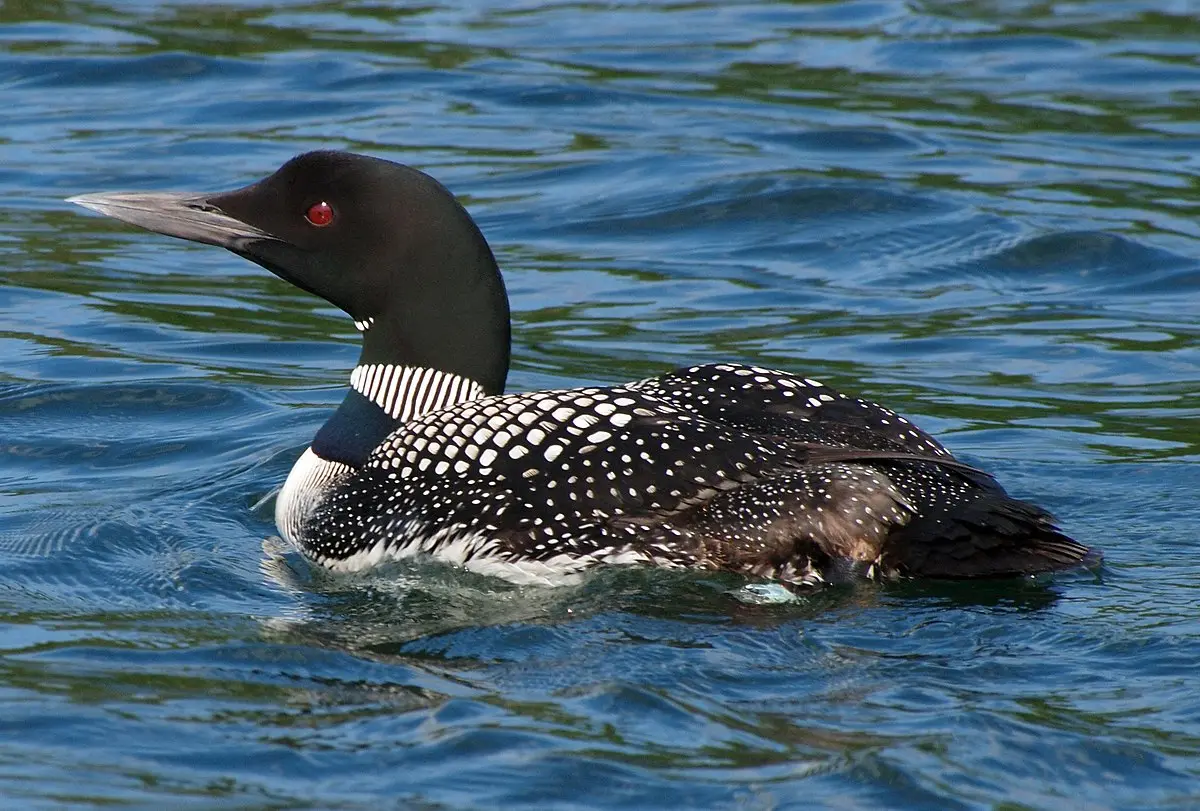
Habitat and Distribution of the Common Loon
The Common Loon primarily thrives in regions characterized by large, clear, and fish-bearing lakes. Picture a beautifully serene lake, framed by tall pines, where the calm surface reflects the sky above. These environments serve as essential breeding grounds for the loons, as they seek out areas with minimal human disturbance. Ideal habitats, such as those found in Canada and northern U.S. states like Minnesota and Wisconsin, not only offer ample resources for feeding but also safe, sheltered spaces for nesting.
In terms of breeding, these loons typically favor lakes that are at least a quarter mile long, ensuring that they have enough room for takeoff and landing during flight. Nesting occurs in herbaceous vegetation near the lakes’ edges, often at steep drop-offs that allow the loons to approach from below the water surface a design perfected by nature to shield them from many predators. In human-altered landscapes, conservation efforts have contributed artificial nesting platforms to facilitate loon breeding efforts.
The migration of the Common Loon is as much a part of its ecology as its breeding behaviors. As winter approaches, these birds migrate to warmer coastal waters of the Atlantic, Pacific, and Gulf of Mexico. The expansive migration distances ranging between 1,170 to 1,570 miles highlight their adaptability and survival instincts. Notably, studies have shown that loons can travel astonishing distances in a single day, emphasizing their resilience in surviving seasonal changes.
Thus, the habitat and distribution of the Common Loon are intrinsically linked to the health of freshwater ecosystems. Protecting these areas is vital for the loon’s survival and serves as an indicator of water quality and ecological health.
Preferred Environments for Nesting
The nesting habits of the Common Loon (Gavia immer) are tailored to the unique challenges they face in their aquatic environment. They typically position their nests along quiet lakeshores in secluded areas that provide shelter from predators. This choice is crucial, as the loon is not well adapted to terrestrial life and spends most of its time in the water.
When considering the preferred nesting environments, it’s essential to examine specific factors:
- Proximity to Water: Common Loons often build their nests within 10 to 20 feet of water, using nest materials from the surrounding area, such as vegetation and mud. This proximity to water is vital for the chicks, as they are born precocial, meaning they can swim shortly after hatching but still require parental care.
- Sheltered Locations: Nests are typically located on islands or in sheltered bays, away from high-traffic areas that could disturb them. These locations provide a safer environment against land-based predators.
- Avoidance of Human Disturbance: Human activities can significantly affect nesting success. In regions with heavy recreational boating and other disturbances, loons are more likely to abandon their nests. Conservation measures like creating protected zones and monitoring human activity are in place in many lakes to support nesting.
- Artificial Nesting Platforms: In areas with limited natural nesting sites due to development or other factors, conservationists have introduced artificial platforms to help maintain loon populations.
The Common Loon’s choice of nesting environment emphasizes its reliance on specific ecological conditions. Their ability to thrive in these targeted environments speaks to the health of local ecosystems. Therefore, preserving and understanding these nesting habitats is essential for ensuring the survival of the species and the biodiversity they represent.
Migration Patterns and Ranges
Migration patterns significantly impact the life cycle of the Common Loon, shaping their behavior, breeding, and interaction with changing landscapes. Following their breeding season in the northern lakes, commonly extending from April to early May, these birds embark on long migrations to escape the cold, ensuring their survival through the harsher winter months.
- Breeding Range: The primary breeding grounds for Common Loons are in the northern regions of North America, spanning from Alaska and Canada to parts of the northern United States. In these environments, they build their nests, facilitated by the abundance of clean waters and fish resources essential for their diet and feeding behavior.
- Migration Routes: During the fall, loons migrate towards the coastlines Atlantic, Pacific, and Gulf of Mexico areas transitioning from freshwater lakes to marine environments. They carefully select staging areas, such as lakes and reservoirs, for resting during migration. Research has shown that during early migration, juvenile loons often stop at nearby lakes to gain strength before continuing their journey.
- Travel Capacities: Alarmingly impressive, a recorded loon was documented traveling 670 miles in one day a testament to their endurance and navigation skills. These migratory journeys can range from approximately 1,170 to 1,570 miles, requiring them to adapt to various ecosystems and food sources.
- Parameterized Insights: Satellite telemetry studies have shed light on migration routes by tracking loons in real-time, revealing key foraging habitats during migration and wintering periods. Such information shapes conservation strategies and helps identify critical habitats that need protection.
Migration patterns are essential for understanding the Common Loon’s life cycle and habitat preferences. By tracking these migratory behaviors and the winter habitats they rely on, conservationists can implement measures to protect both breeding and wintering regions critical for the loon’s survival.
Impact of Environmental Changes on Habitat
The Common Loon is particularly sensitive to environmental changes, which can significantly impact its breeding and migratory habitats. As a species dependent on clean water and abundant fish populations, any alterations to their ecosystems can have dire consequences.
- Climate Change Effects: Climate change is leading to fluctuating weather patterns, affecting temperatures and precipitation levels. Increased rainfall during nesting can lead to flooding of nests, while rising temperatures put stress on the loons and their habitat.
- Habitat Degradation: Human activities, such as shoreline development and increased recreational usage, compromise the tranquility of nesting sites, leading to decreased reproductive success. The disturbance from noise and human presence can prompt loons to abandon their nests.
- Pollution: Loon populations are vulnerable to pollutants, particularly chemicals like heavy metals and petroleum products, that accumulate in freshwater systems. Such contaminants not only affect their health but also disrupt the broader aquatic ecosystem.
- Predation Dynamics: Environmental changes often lead to increased predation; for example, a rise in raccoon populations near lakes results from human encroachment, endangering loon nests by targeting eggs and chicks.
The ecological health of lakes and coastal regions directly correlates with the wellbeing of the Common Loon. As environmental conditions shift, concerted conservation efforts must expand to incorporate habitat preservation and pollution control measures to secure a future for this unique avian species.
Physical Characteristics of the Common Loon
The Common Loon is a striking waterbird, easily identifiable by its distinctive physical features. These characteristics are not only aesthetically appealing but also functionally designed to support their aquatic lifestyle.
- Plumage Variation: During the breeding season, Common Loons exhibit a striking black head and bill with a white breast, complemented by a black-and-white checkered back and a beautifully striped neck. As the seasons change, their plumage shifts to more muted gray tones during winter, which aids in camouflage against predators.
- Size and Dimensions: Typically measuring between 28 to 36 inches (71 to 91 centimeters) in length and boasting a wingspan ranging from 4 to 5 feet (117 to 152 centimeters), Common Loons are among the larger waterbirds. Their weight varies between 9 to 12 pounds (4 to 5.5 kilograms), with males generally being larger than females.
- Adaptations for Swimming: Their long, sleek bodies and position of legs towards the back of their frames optimize swimming capabilities. This anatomical design facilitates smooth movement under water, crucial for their hunting patterns.
- Distinctive Bills: The loon’s bill is sharp and dagger-like, adapted for efficient predation on fish. When not on display, their long wings and pointed tails further enhance their streamlined profile, vital for plunging into the water.
- Eye-catching Eyes: One of the most captivating features of the Common Loon is its striking red eyes. This unusual coloration not only draws attention but also aids in their superior vision for spotting fish underwater.
In essence, the physical characteristics of the Common Loon embody the essence of wilderness, with features closely tied to its habitat and lifestyle. Their striking appearance serves as a symbol of the diversity and beauty found within North America’s lakes.
Distinctive Features and Markings
The Common Loon has several distinctive features and markings that contribute to its recognition and allure. These visual attributes play a significant role in their behavioral ecology, especially during breeding seasons.
- Breeding Plumage: The striking black and white plumage during breeding is one of the most recognizable features of the Common Loon. Their black heads are quite majestic, topped by a jagged crest that emphasizes their striking appearance against the backdrop of emerald waters.
- Checkered Pattern: The unique checkered pattern on their backs is not merely decorative; it serves as effective camouflage when the loons are floating on water, offering concealment from potential aerial predators.
- Neck Stripes: The black-and-white stripes along their necks are not only visually striking but are also a means of communication among loons, helping to establish territorial boundaries during mating seasons.
- Size Differences: Although both male and female loons share similar markings, males are generally larger, an interesting point to note for birdwatchers hoping to identify the sexes.
- Color Transition: As the seasons transition from breeding to winter, the loon’s distinct coloration changes significantly, with males and females both adopting a gray coat that aids in blending into their wintering habitats. This shift emphasizes their adaptability to seasonal changes.
The identification of the Common Loon is infinitely enriched by understanding its distinctive markings and features. These attributes are essential not only for recognizing the species but also for understanding their behavior and ecology within their habitats.
Size and Weight Comparisons
When discussing the size and weight of the Common Loon, it’s valuable to consider their adaptability and evolution in aquatic environments. Comparatively speaking, loons are one of the larger avian species found in freshwater lakes, and this size plays a crucial role in their ecological niche.
- Length and Wingspan: Common Loons typically range between 28 to 36 inches (71 to 91 cm) in length. Their wingspan generally measures around 4 to 5 feet (117 to 152 cm), giving them an impressive profile during flight.
- Weight Differences: Adult loons weigh between 9 to 12 pounds (4 to 5.5 kg), with males being larger and bulkier than females. The size difference is subtle enough that visual identification can be challenging in the field.
- Comparative Size: In comparison to other waterbirds, the Common Loon’s size ensures a robust ability to dive and capture prey effectively. Species like the Great Blue Heron, which also inhabit similar environments, average about 38 to 54 inches (97 to 137 cm) in length but have a different ecological role due to their feeding adaptations.
- Diving and Feeding Efficiency: Their weight, combined with a streamlined body, allows them to dive effectively and swim swiftly through the water. Additionally, buoyancy adaptations, such as solid bones, enhance their diving capabilities, which is essential for their survival and feeding strategies.
- Life Cycle Considerations: Size and weight play a significant role in various life stages, including the vigorous demands of migration and the energy needs during breeding periods.
The physical size of the Common Loon not only distinguishes it from other avian species but also highlights the ecological adaptations that allow it to thrive in aquatic environments. Understanding these distinctions is important for birdwatchers, researchers, and conservationists alike.
Adaptations for Aquatic Life
The Common Loon (Gavia immer) is a master of aquatic life, exhibiting several evolutionary adaptations that ensure survival in its freshwater and coastal habitats. Each of these adaptations plays an essential role in their feeding habits, breeding strategies, and overall lifestyle.
- Hydrodynamic Body Shape: The loon’s body is elongated and streamlined, facilitating swift movement through the water. This design minimizes drag, making it easier for the bird to dive deep and cover long distances while swimming.
- Leg Positioning: Loons have legs positioned remarkably far back on their bodies. While this placement enhances their swimming ability, it makes them awkward on land. This adaptation is perfect for their lifestyle, allowing them to navigate seamlessly in water and dive efficiently for fish.
- Solid Bones: Unlike most birds, Common Loons have solid bones for reduced buoyancy. This feature enables them to dive deeper and remain submerged while hunting. They can reach depths of over 200 feet while pursuing prey, showcasing their exceptional diving ability.
- Sharp Bills: Their dagger-like bills are uniquely adapted for catching slippery fish a primary component of their diet. The bills also serve to capture a variety of aquatic prey safely, helping the loons thrive in their ecological niche.
- Camouflage: Loons employ a coloration strategy that matches their habitat. Their striking black and white breeding plumage serves well against the backdrop of glistening lakes, while their muted colors in winter help them blend in more effectively against the water’s surface, providing essential protection from predators.
These adaptations for aquatic life allow the Common Loon to excel as a predator within its ecosystem. By understanding these intricate connections between morphological traits and ecological behaviors, we gain a deeper appreciation for the challenges loons face in their environments and the conservation efforts required to preserve such an extraordinary species.
Behavior and Social Structure
The Common Loon displays fascinating behavioral traits and a unique social structure, primarily influenced by environmental factors and reproductive strategies. Their behavior, which is characterized by complex vocalizations and distinct social roles, contributes to the stability of their populations.
- Territorial Behavior: During the breeding season, male loons become highly territorial, defending their nesting sites against intruders. Territories can range in size from 60 to 200 acres, and males engage in vigorous displays and vocalizations to maintain their dominance and ward off others.
- Vocal Communication: Vocalizations play a pivotal role in their territory establishment and maintenance. Various calls, including the haunting wail and aggressive yodel, serve distinct purposes. For instance, males use the yodel as a territorial warning, while wails function as long-distance contact calls to locate mates or chicks.
- Pair Bonds: Loons typically mate for life, forming strong pair bonds. Their relationship is reinforced through synchronized swimming and coordinated vocalizations, which enhance their cooperative behaviors in guarding territories and raising young.
- Nest Site Selection: Breeding pairs select nest sites that offer both safety and accessibility to the water. The rationale behind this behavior is twofold: it protects the young chicks from terrestrial predators while ensuring that they have immediate access to food resources.
- Parental Roles: Both parents actively participate in incubating eggs, protecting the nest, and caring for the chicks. The division of parental roles ensures that the chicks receive the necessary guidance and protection during their early development.
The behavior and social structure of the Common Loon emphasize the importance of cooperation and establish a balance in their reproductive and survival strategies. Understanding these dynamics helps inform conservation efforts and highlights the intricate relationships within the species.
Vocalizations and Communication
The vocalizations of the Common Loon are as haunting as they are beautiful, serving critical functions in communication and social interaction within their species. These calls are integral to their territoriality, mating rituals, and overall social structure.
- Types of Calls: The Common Loon utilizes a range of vocalizations, each with distinct meanings and contexts. The four primary calls are:
- Wail: A long-distance contact call used to locate mates or chicks.
- Tremolo: Associated with threats or agitation, often heard when loons sense danger nearby.
- Yodel: A territorial call primarily used by males; it conveys information about the caller’s identity and strength.
- Hoot: A more subtle call, typically used in close proximity to communicate with a partner.
- Environmental Influences: Vocal behavior can change based on environmental conditions. For example, loons are more vocal at night and during periods of calm weather, relying on auditory communication when visibility is reduced.
- Complexity and Individuality: Each male loon has a unique yodel, with variations reflecting their health and dominance status. This individuality reinforces social structures and mating dynamics within the species.
- Effects of Disruption: Human-induced disturbances can disrupt vocal communication among loons, challenging their ability to establish territories and find mates. This highlights the need for protective measures in areas frequented by human activity.
- Ecological Importance: Vocalizations are not just essential for loons; they also play a vital role in understanding ecosystem health. Researchers monitor loon calls to assess population dynamics and environmental changes, making them important indicators of biodiversity and habitat quality.
By studying the vocalizations of the Common Loon, we gain insights into their social structure and ecological roles, emphasizing the complex interplay between communication and survival in natural ecosystems.
Mating Rituals and Breeding Behavior
The mating rituals and breeding behaviors of the Common Loon are as captivating as their distinctive songs. These behaviors reflect their adaptations to an aquatic environment, showcasing both territoriality and cooperation between mated pairs.
- Courtship Displays: Mating rituals involve synchronized swimming and unique vocalizations. During courtship, pairs engage in complex displays that include diving, circling each other, and coordinated calls, reinforcing their bonds while asserting territorial claims.
- Nesting Strategies: Common Loons typically nest in secluded areas near water, opting for locations that minimize disturbance from human activity. Nest construction involves the use of aquatic vegetation and other organic materials, creating secure and camouflaged environments for their eggs.
- Breeding Season Dynamics: The breeding season commences as males return to their territories. They establish dominance through vocal displays, assertive behaviors, and territorial marking. Once paired, the female often assumes a more substantial role in egg incubation, balancing warmth and safety.
- Egg Incubation: Common Loons lay one to two eggs, with incubation lasting about 26 to 30 days. Both parents take turns incubating the eggs, ensuring consistent temperature and protection while remaining vigilant against potential threats.
- Chick Rearing: Parental care extends to the chicks, which are initially precocial, meaning they can swim and dive shortly after hatching. Loons often carry their chicks on their backs for warmth and safety during their first weeks, providing essential learning experiences about foraging.
The breeding behaviors of the Common Loon highlight the delicate balance of cooperation, parental care, and territorial defense that defines their reproductive success. Understanding these dynamics is crucial for conservation efforts aimed at protecting their population and habitats.
Territoriality and Parental Care
The territoriality and parental care exhibited by the Common Loon are fundamental aspects of their breeding behavior, reflecting their adaptations to a highly aquatic lifestyle. These traits are intrinsic to their survival and reproductive success.
- Territorial Defense: Male loons are fiercely territorial, especially during the breeding season. They engage in displays of aggression, vocalizations, and physical confrontations when defending their nesting areas. Territories can range in size, with optimal spaces often correlated with food availability and safety from predators.
- Mate Selection: Once pairs are formed, their bond is strengthened through cooperative behaviors. Mated pairs work together to establish and defend their territory, often participating in synchronized swimming as a show of unity.
- Nesting Area Choice: Common Loons favor secluded nesting sites near water, typically selecting shorelines that minimize disturbance from human activities. The selection of nesting sites that offer protection from predators is vital for raising their young successfully.
- Shared Responsibilities: Both parents share the responsibility of incubating the eggs and caring for the chicks after hatching. This cooperative approach ensures that the eggs are adequately protected, minimizing the risks associated with predation and environmental disturbances.
- Chick Development: Following hatching, chicks are precocial, capable of swimming and diving shortly after birth. Parents play an active role in teaching their chicks essential survival skills, including foraging techniques. For the first few weeks, chicks ride on their parents’ backs, offering protection and warmth.
Through their territoriality and parental care strategies, Common Loons exemplify the intricacies of life in aquatic environments. Understanding these behaviors is vital for conserving their populations and ensuring their continued presence in North America’s natural landscapes.
Diet and Feeding Techniques
The diet and feeding techniques of the Common Loon are tailored to its aquatic habitat, primarily consisting of fish but also including various invertebrates. Their adaptations enable them to thrive in a competitive ecological niche.
- Main Diet Composition: Common Loons predominantly feed on fish, favoring species like yellow perch and sunfish due to their erratic swimming patterns that make them easier to capture. While they target specific types of fish, their diet may also include other aquatic organisms, such as crayfish, frogs, and invertebrates.
- Diet Variability: During winter months, when they migrate to coastal regions, loons expand their diet to include marine life. This can encompass crabs, shrimp, and various marine invertebrates, showcasing their adaptability to diverse environments.
- Foraging Techniques: Loons employ a distinctive foraging strategy. Swimming with their eyes submerged allows them to locate prey below the water’s surface. Once they have spotted potential food, they dive and rely on their powerful legs for propulsion.
- Hunting Depths: Common Loons are exceptional divers, capable of reaching depths of over 60 meters (200 feet) while hunting for food. Their bodies are designed to minimize buoyancy, making them adept at navigating underwater.
- Feeding Behavior: When capturing prey, loons utilize their sharp bills to grasp slippery fish effectively. They often bring their catch back to the surface, manipulating it to swallow headfirst, which prevents escape.
The diet and feeding techniques of the Common Loon are central to its survival in both freshwater and coastal habitats. Understanding these aspects is critical for conservation efforts and maintaining healthy aquatic ecosystems.
Common Prey and Foraging Strategies
The foraging strategies of the Common Loon are highly specialized, allowing them to effectively capture and consume their preferred prey. Analyzing their diet reveals insights into their ecological roles in aquatic environments.
- Preferred Prey: Common Loons primarily hunt fish, opting for species such as yellow perch, pumpkinseed, and bluegill. These fish are not only abundant in their habitats but also exhibit erratic swimming behaviors, increasing their vulnerability to loons.
- Diverse Diet: In addition to fish, their diet includes crustaceans, frogs, leeches, and even aquatic insects, reflecting their adaptability depending on food availability. This diversity ensures a balanced nutrient intake and influences their overall health.
- Foraging Techniques: Loons are primarily pursuit predators. They dive underwater, utilising their long, pointed bills to spear their prey. Their streamlined bodies allow for quick movement, making them efficient hunters in aquatic environments.
- Hunting Patterns: Foraging usually occurs in water with good visibility, which maximizes hunting success. Loons often utilize both solitary and cooperative feeding strategies when raising their young, teaching chicks to dive and capture prey.
- Seasonal Variations: The common loon’s prey can shift seasonally as water temperatures change and fish populations vary. During winter, their diet expands to encompass marine organisms in coastal areas, demonstrating their resilience and adaptability.
By understanding the Common Loon’s common prey and foraging strategies, we can glean valuable insights into their ecological roles and the health of aquatic ecosystems, further underscoring the importance of conservation efforts.
Hunting Techniques and Depth Range
The hunting techniques of the Common Loon are a remarkable testament to their adaptations and skills as aquatic predators. Their efficiency in capturing prey directly influences their survival and breeding success.
- Diving Abilities: Common Loons are proficient divers, able to remain submerged for up to five minutes while searching for food. Their streamlined bodies and solid bones reduce buoyancy, enabling them to dive deeper and hunt fish more effectively.
- Depth Range: Loons can dive to impressive depths, often exceeding 200 feet (60 meters) while pursuing prey. This ability not only highlights their physiological adaptations but also illustrates their role as top predators within their ecosystems.
- Stealthy Approach: When hunting, loons employ stealth tactics. They dive silently from the surface, swimming with their heads submerged to maintain a low profile. When they spot their target, they utilize powerful strokes of their wings and feet to propel themselves swiftly toward the fish.
- Prey Capture: Loon’s sharp, hooked bills are specialized for catching slippery fish and other aquatic prey, allowing them to strike with precision. Once caught, they manipulate their prey for efficient swallowing, usually headfirst, ensuring that it does not escape.
- Environmental Adaptations: Their hunting techniques are adapted to the conditions of their environment. Loons often forage in clear waters with good visibility and employ different strategies based on the availability of prey. This adaptability is crucial, particularly when seasonal conditions change.
Hunting techniques and depth range are critical aspects of the Common Loon’s lifestyle, showcasing their evolutionary adaptations and highlighting the importance of healthy aquatic habitats for their continued survival.
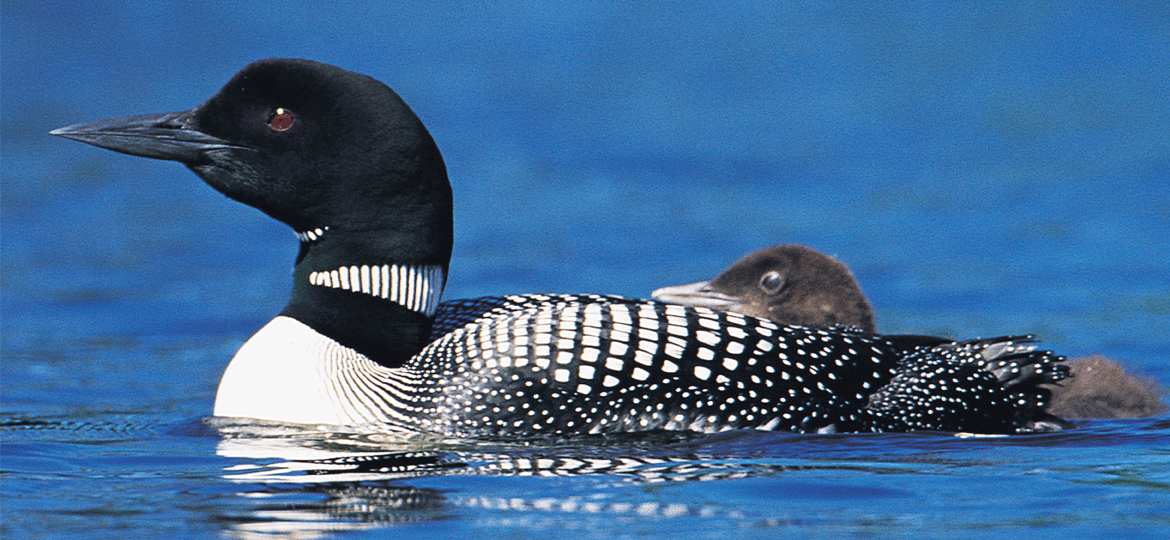
Influence of Diet on Health
The dietary habits of the Common Loon have a profound impact on their health and overall survival. An understanding of their nutrition is essential for appreciating how these birds thrive in their ecosystems.
- Fish-Based Diet: As fish-eating specialists, Common Loons rely heavily on protein-rich diets to support their energy needs, particularly during the breeding season. Fish such as yellow perch and sunfish comprise a major portion of their diet, providing necessary nutrients.
- Health Implications: A nutrient-dense diet is vital for maintaining the vitality of loons. Proper nutrition impacts their reproductive success, physical resilience, and ability to navigate migratory challenges. Healthy foods contribute directly to healthier breeding populations.
- Pollution Threats: Loons are notably susceptible to health issues arising from contaminated diets. Lead poisoning from ingested fishing tackle and avian botulism from consuming tainted fish present significant risks. These contaminants can lead to severe health implications, impacting population dynamics.
- Dietary Variation: While primarily piscivorous, loons also consume invertebrates and crustaceans, particularly during times when fish availability diminishes. This dietary flexibility can foster resilience in the face of fluctuating environmental conditions.
- Ecological Health Indicators: Given their sensitivity to pollution and environmental changes, Common Loons serve as important indicators of overall aquatic health. Their diets reflect the status of freshwater ecosystems, making them critical for conservation monitoring.
The influence of diet on the health of Common Loons emphasizes the interconnectedness between species and their environments. Understanding these relationships is vital for conservation efforts focused on protecting both loons and the ecosystems they inhabit.
Conservation Status of the Common Loon
The conservation status of the Common Loon (Gavia immer) has garnered attention due to the species’ sensitivity to environmental changes and the corresponding impact on its populations. While generally stable across North America, certain regional populations face significant threats that require ongoing conservation efforts.
- Population Health: The Common Loon is not classified as endangered or threatened broadly, yet populations in specific states, such as Michigan, are at risk. As a result, various conservation organizations have implemented monitoring programs to track population trends.
- Breeding Habitat Sensitivity: Loons depend primarily on clean, unpolluted waters for breeding. Their habitats are particularly vulnerable to human disturbances, including lakeshore development, pollution from agricultural runoff, and increased recreational activities.
- Threats to Survival: Several factors challenge the Common Loon’s population stability:
- Human Disturbance: Recreation and development around lakes disrupt nesting sites and disturb breeding loons, leading to reduced reproductive success.
- Climate Change: Rising temperatures and altered precipitation patterns can affect nesting success and the availability of fish populations upon which loons rely.
- Chemical Contaminants: Pollution, particularly from heavy metals and persistent organic pollutants, can accumulate in aquatic food webs and create serious health risks for loons.
- Monitoring Programs: Conservation initiatives often focus on monitoring local loon populations and their breeding success. Notable efforts include habitat protection measures and public awareness campaigns to foster respect for loon breeding sites.
- Successful Interventions: In some regions, measures such as providing artificial nesting platforms have contributed to stabilizing local loon populations, showcasing the effectiveness of targeted conservation actions.
The conservation status of the Common Loon underscores the need for continued research, monitoring, and proactive measures to maintain stable populations and protect their critical habitats. Through collaborative efforts among conservationists, researchers, and local communities, it is possible to safeguard this emblematic species for generations to come.
Threats to Population and Habitat
The Common Loon faces an array of threats that impact both its population and habitat, raising concerns for its long-term survival. Understanding these threats is essential in formulating effective conservation strategies.
- Human Disturbance: Human activities like shoreline development, boat traffic, and recreational activities pose significant threats to loon populations. Disturbances from these activities can disrupt nesting behaviors, leading to reduced reproductive success.
- Climate Change: The impacts of climate change are increasingly evident, particularly in the timing of seasonal events and habitat availability. Changes in temperature can affect breeding success, while altered water levels can jeopardize nests located at the water’s edge.
- Predation Pressure: Increased human populations around lakes can lead to higher raccoon and gull populations, which are known predators of loon eggs and chicks. Nesting sites in developed areas often experience higher predation rates.
- Chemical Contaminants: Chemical pollutants present another substantial risk. Heavy metals, such as mercury, and persistent organic pollutants can accumulate in aquatic food chains, threatening loon health and reproductive abilities.
- Lead Poisoning: In particular regions, lead poisoning due to ingestion of fishing tackle has been identified as a leading cause of mortality among adult loons. This underscores the critical need for public education on responsible fishing practices.
The multitude of threats to Common Loon populations and their habitats emphasizes the importance of conservation strategies that address these risks. By fostering a better understanding of their ecological needs, we can facilitate measures that ensure the long-term survival of this magnificent species.
Conservation Efforts and Policies
Concerted conservation efforts are crucial in maintaining the health of Common Loon populations and ensuring the protection of their habitats. These initiatives require a multifaceted approach that considers the species’ ecology, threats, and local community involvement.
- Protecting Nesting Areas: Conservation organizations often collaborate with local governments to establish protective measures around loon nesting sites. Designating buffer zones and restricting human access during crucial breeding seasons can significantly increase nesting success.
- Artificial Nest Platforms: In areas with limited natural nesting sites due to development, conservationists have introduced artificial nesting platforms. These efforts serve to bolster local loon populations by providing safe nesting options in increasingly fragmented habitats.
- Public Awareness Campaigns: Educational initiatives targeting local communities play a vital role in promoting awareness regarding the significance of loons and their habitats. By fostering a sense of connectedness and stewardship, public support for conservation efforts can be strengthened.
- Research and Monitoring: Ongoing studies are critical for understanding loon ecology and assessing population health. Research initiatives focus on tracking migration patterns, nesting success, and responses to environmental changes, informing adaptive management strategies.
- Collaboration with Agencies: Successful conservation necessitates collaboration among various stakeholders, including government agencies, non-profit organizations, and research institutions. Implementing policies that support habitat protection and address pollution sources is fundamental for the long-term resilience of Common Loon populations.
Through these concerted conservation efforts, the objective is to maintain viable loon populations and contribute to the ecological integrity of the aquatic ecosystems they inhabit. A proactive approach, combined with community involvement, continues to be instrumental in safeguarding this cherished species.
Role in Ecosystems and Indicator Species
The Common Loon plays a crucial role within aquatic ecosystems, acting as both a predator and an indicator species for environmental health. As top predators, loons contribute to ecological balance and provide insights into the integrity of freshwater habitats.
- Predatory Role: As apex predators in their environments, Common Loons help to regulate fish populations, directly influencing the structure and health of aquatic ecosystems. Their presence signals a balanced predator-prey relationship, vital for maintaining biodiversity.
- Indicator of Water Quality: Loons are exceptionally sensitive to changes in water quality. Their reliance on clean, unpolluted lakes for breeding and foraging means that declines in loon populations can indicate broader ecological problems, such as pollution or habitat degradation.
- Ecosystem Connectivity: The health of the Common Loon is often intertwined with other species and habitats. Changes in their population dynamics can reflect shifts in the availability of food, habitat loss, or the impacts of climate change, making them important indicators for conservation biologists.
- Bioindicators of Environmental Change: For conservationists, loons serve as vital bioindicators, with their health providing signals about the ecological state of freshwater systems. Understanding the status of loon populations can guide decisions about habitat protection and restoration efforts.
- Research and Monitoring: Due to their long lifespan and visibility, Common Loons are often subjects of longitudinal ecological studies. These investigations help researchers better understand the relationship between loons and their habitats, enhancing conservation strategies targeting both breeds and aquatic ecosystems.
By studying the role of the Common Loon in ecosystems, we can appreciate its contributions to aquatic health and the importance of conserving both the species and their habitats for future generations.
Cultural Significance of the Common Loon
The Common Loon holds a profound cultural significance, particularly among Indigenous peoples of North America. Its presence is interwoven with folklore, spiritual beliefs, artistic expressions, and local identities.
- Indigenous Symbolism: Many Native American tribes view the Common Loon as a powerful symbol of harmony, medicine, and healing. In various creation stories, the loon plays roles that highlight its connection to nature and spirituality, often being depicted as a messenger between the physical and spiritual worlds.
- Folklore Accounts: The loon is featured in numerous myths and legends, acting as the Earth-Diver or protector of water. Indigenous peoples have long held the belief that the calls of the loon carry significant messages, reflecting traditional views about nature’s interconnectedness.
- Art and Cultural Representation: The striking physical traits of the loon make it a popular subject in Indigenous art, appearing in carvings, paintings, and textiles. Its imagery often symbolizes beauty, elegance, and the importance of water, serving as a reminder of cultural heritage and identity.
- Cultural Education: Modern ecotourism initiatives aimed at promoting the cultural significance of the Common Loon help to educate visitors about its importance to Indigenous peoples. This fosters respect for cultural narratives and highlights the need for preserving both the species and its habitats.
- Conservation Advocacy: By recognizing the cultural value associated with the Common Loon, communities can strengthen conservation efforts. Understanding the relationship between loons and cultural heritage fosters greater advocacy for habitat protection and the preservation of traditional practices.
Through its cultural significance, the Common Loon transcends being just a species; it is a powerful emblem of nature’s intricacies and human connection to the environment. Arguably, tapping into this cultural dimension can inspire greater efforts to protect both the loons and their ecosystems.
Representation in Folklore and Art
The Common Loon’s representation in folklore and art speaks to its deep cultural significance among Native American and other communities. These narratives often highlight the bird’s ecological and spiritual roles while celebrating its majestic beauty.
- Cultural Myths: In many Indigenous cultures, the Common Loon is woven into creation stories, often viewed as a creature of transformation or a harbinger of good fortune. Tales tell of loons carrying messages or serving as guides in the water, reinforcing their revered status.
- Symbol of Nature: The calls of the loon resonate deeply in natural lore, often interpreted as cries of longing or connection. They embody the spirit of wild lakes and serve as symbols of purity and abundance in nature.
- Artistic Depictions: Artistic representations of the Common Loon can be found in various forms within Indigenous artistry, from carvings to paintings. Their striking black-and-white plumage and red eyes make them visually captivating subjects that symbolize beauty and resilience.
- Totems and Cultural Significance: For tribes such as the Chippewa and Menominee, loons are significant clan animals featured in totemic art. They embody attributes such as loyalty and vigilance, emphasizing the bird’s integral role in family and community.
- Contemporary Artistic Expression: Today, the Common Loon continues to inspire modern artists and authors, capturing the rugged beauty of Northern landscapes. Its haunting calls and iconic presence are often used to convey themes of wilderness and the interconnectedness of all living beings.
The representation of the Common Loon in folklore and art provides insights into the intricate relationship between humans and nature. By celebrating these cultural aspects, we can foster a deeper appreciation for the species and inspire greater conservation efforts.
Impact on Local Economies via Ecotourism
The Common Loon is not only an ecological icon but also plays a vital role in local economies through the burgeoning field of ecotourism. This intersection of nature, culture, and economics highlights the importance of conservation for both loons and the communities that cherish them.
- Ecotourism Revenue: Ecotourism initiatives centered on wildlife observation, particularly of the Common Loon, generate significant revenue for local economies. Tourists engage in birdwatching, photography, and nature tours, contributing to a financial influx that supports local businesses.
- Job Creation: The rise of ecotourism creates numerous job opportunities within local communities. Positions as tour guides, naturalists, and hospitality service providers become essential as the demand for nature-based experiences grows, fostering economic development.
- Infrastructure Development: Successful ecotourism ventures often lead to improved infrastructure, such as enhanced roads, utilities, and visitor facilities. These developments not only benefit tourists but also improve the quality of life for local residents, fostering sustainable growth.
- Cultural Heritage Preservation: The presence of the Common Loon is intimately tied to the cultural practices of Indigenous peoples. Ecotourism initiatives can promote the preservation of Indigenous stories and traditions, elevating cultural heritage while integrating education about local ecosystems.
- Community Stewardship: As locals engage in ecotourism, they develop a deeper appreciation for their natural surroundings, fostering a sense of stewardship and responsibility towards conservation efforts. This involvement can lead to greater advocacy for habitat protection and sustainable practices in their communities.
Through its impact on local economies, the Common Loon facilitates a sustainable model for using natural resources and cultural heritage, strengthening the interconnectedness of ecological and human communities. By recognizing the economic potential of ecotourism centered around the Common Loon, local areas can benefit while maintaining the health of ecosystems critical to the species.
Symbol of Wilderness in North America
The Common Loon has emerged as a symbolic representation of wilderness, embodying the spirit of North America’s pristine lakes and natural landscapes. Its haunting calls and striking presence contribute to its status as a cherished icon of the wild.
- Connection to Nature: The moments spent observing or hearing the calls of the Common Loon evoke feelings of tranquility and connection to the natural world. Thus, the loon serves as a reminder of the beauty and fragility of freshwater ecosystems.
- Cultural Representation: The symbolic association of the Common Loon extends into cultural narratives and artistic expressions that celebrate nature’s allure. Its iconic imagery appears in literature, art, and local branding, reinforcing its identity as a representation of wilderness.
- Conservation Advocate: As a symbol of wilderness, the loon also advocates for environmental stewardship. By promoting conservation efforts that protect not only loons but their habitats, individuals become engaged in broader ecological movements.
- Inspiring Conservation Action: The emotional and aesthetic appeal of the Common Loon can galvanize communities and organizations to take action toward conservation initiatives. Awareness campaigns focusing on the loon ethos can foster a sense of urgency to protect threatened ecosystems.
- Ecosystem Health Indicator: As an indicator species, changes in loon populations can signify broader environmental shifts. Consequently, protecting the symbolic wilderness of the Common Loon can lead to life-saving measures for entire aquatic systems and the species that inhabit them.
In essence, the Common Loon transcends its existence as a mere bird, blossoming into a potent symbol of wilderness. Its preservation echoes the importance of safeguarding natural heritage while invoking appreciation for the diverse ecosystems it represents.
Conclusion
The Common Loon’s journey through North America’s lakes and ecosystems is one marked by beauty, struggle, and resilience. From its striking appearance and enchanting calls to its critical role as an apex predator and indicator of ecosystem health, the Common Loon encapsulates the interconnectedness of life. As we navigate the complexities of environment and conservation, preserving these magnificent birds and their habitats emerges as a shared responsibility. The stories, cultural significance, and ecological value of the Common Loon remind us of our connection to nature and the importance of safeguarding it for future generations. Through concerted efforts in conservation, ecotourism, and cultural education, we can ensure that the haunting calls of the Common Loon continue to echo across the pristine waters of North America, reminding us of the wild beauty that surrounds us.






